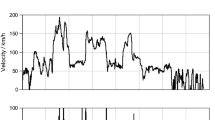Abstract
Powertrain development in the automotive industry has changed significantly over the recent years and is forecasted to alter even more in the near future. For many decades, the internal combustion engine was the only propulsion system for passenger cars and commercial vehicles. The need to minimize CO2 emissions from the transportation sector to limit global warming as well as the new requirements to reduce real driving emissions (RDE) to further improve air quality, specifically in urban areas, forced OEMs, Tier1 suppliers and engineering service suppliers to also develop electrified powertrains. The portfolio of vehicle propulsion systems in the future will include pure electric vehicles, full (plug-in) hybrid vehicles, mild electrified (48V) hybrid powertrains but also vehicles still only using conventional combustion engines. This enlarged variety in powertrain configurations requires enormous engineering efforts in the development and testing of the full bandwidth of powertrains. To allow a parallel development of the different technologies, it is essential to keep the costs of calibration and testing to a minimum in order to ensure affordable products. To achieve this, a synthesis of advanced simulation methods and modern testing equipment is the suitable solution. It generates a variety of new test procedures and methods for the efficient development of complex propulsion system architectures. The Institute for Combustion Engines at the RWTH Aachen University presented a method to couple a conventional internal combustion engine installed in one test cell via a virtual shaft with an electric machine and / or a transmission installed on another test bench. [1] Another approach is to virtualize individual elements or sub-systems of the powertrain and the environment around the test object. In this case, physical components of the powertrain (e.g. engine, transmission, electric machine) or control units will be connected to virtual systems / components (e.g. vehicle, hybrid powertrain, environment, etc.). [2] This allows the calibration of the full target system while only one part / component is physically available and operated on a test bench. The FEV Group has defined and implemented a consistent strategy for virtual calibration using multiple X-in-the-Loop systems and integrated this approach into the established, quality-guided standard calibration process. Representative examples of characteristic use cases are presented in this paper and the pertaining challenges and benefits are described in more detail.
Access this chapter
Tax calculation will be finalised at checkout
Purchases are for personal use only
Preview
Unable to display preview. Download preview PDF.
Similar content being viewed by others
Author information
Authors and Affiliations
Editor information
Editors and Affiliations
Rights and permissions
Copyright information
© 2018 Springer Fachmedien Wiesbaden GmbH, ein Teil von Springer Nature
About this paper
Cite this paper
Kötter, M. et al. (2018). Powertrain calibration based on X-in-theLoop: Virtualization in the vehicle development process. In: Bargende, M., Reuss, HC., Wiedemann, J. (eds) 18. Internationales Stuttgarter Symposium . Proceedings. Springer Vieweg, Wiesbaden. https://doi.org/10.1007/978-3-658-21194-3_91
Download citation
DOI: https://doi.org/10.1007/978-3-658-21194-3_91
Published:
Publisher Name: Springer Vieweg, Wiesbaden
Print ISBN: 978-3-658-21193-6
Online ISBN: 978-3-658-21194-3
eBook Packages: Computer Science and Engineering (German Language)




